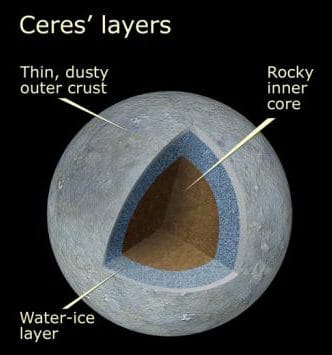The Dwarf Planet Ceres has long been a point of intrigue within the scientific community. Ceres, the largest object in the asteroid belt located between Mars and Jupiter, has recently been the subject of investigation carried out by NASA’s space probe, Dawn. The findings of the analysis have brought forth surprising revelations – it appears that Ceres may be home to a rich assortment of organic compounds, hinting at the possibility of materials originating from distant cosmic objects.
The Dawn mission, initiated in 2007, made history as it managed to do a detailed study of Ceres, offering amazing photographs of its surface features and geology. Observations revealed that dark spots present on the dwarf planet can betray a surface rich in organic material. Researchers from the University of Bratislava have concluded that the source of these materials could be primitive asteroids, fragments of which collided onto Ceres.
The existence of organic substances on Ceres indicates churning processes that have contributed to the enrichment of the planet with this diverse assortment. These processes – resulting from impacts with other cosmic objects – could invoke the development of hydrothermal systems at Ceres’ interior, revealing the potential for primitive life forms. This opens up a new area for scientific interest, guiding investigations into the possibility of life beyond Earth.
More studies are required to reach a concrete conclusion on the existence of life on Ceres. Nonetheless, the data gathered so far is compelling enough for researchers to assert that the dwarf planet’s material came from extraterrestrial sources. As we continue to decipher the enigma of Ceres, exploration of the cosmos and its potentially life-giving elements will proceed, giving us a better understanding of our own existence and its celestial companions.



